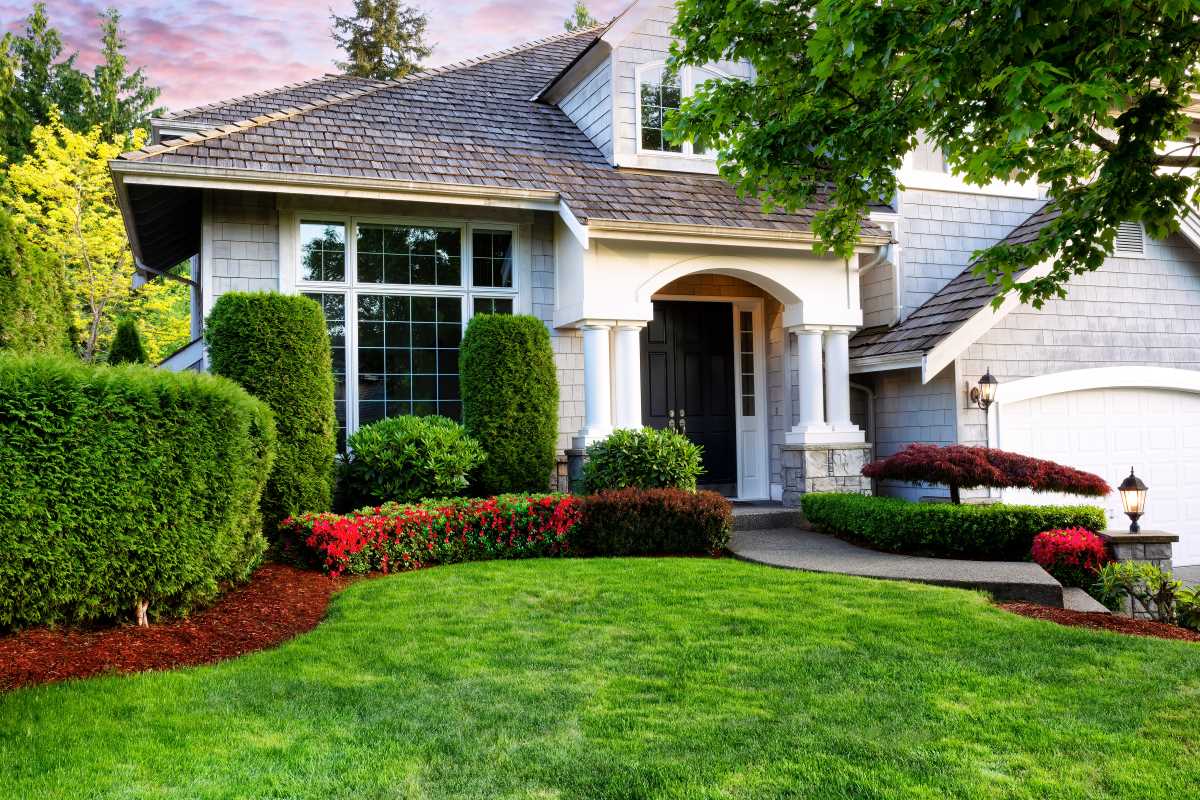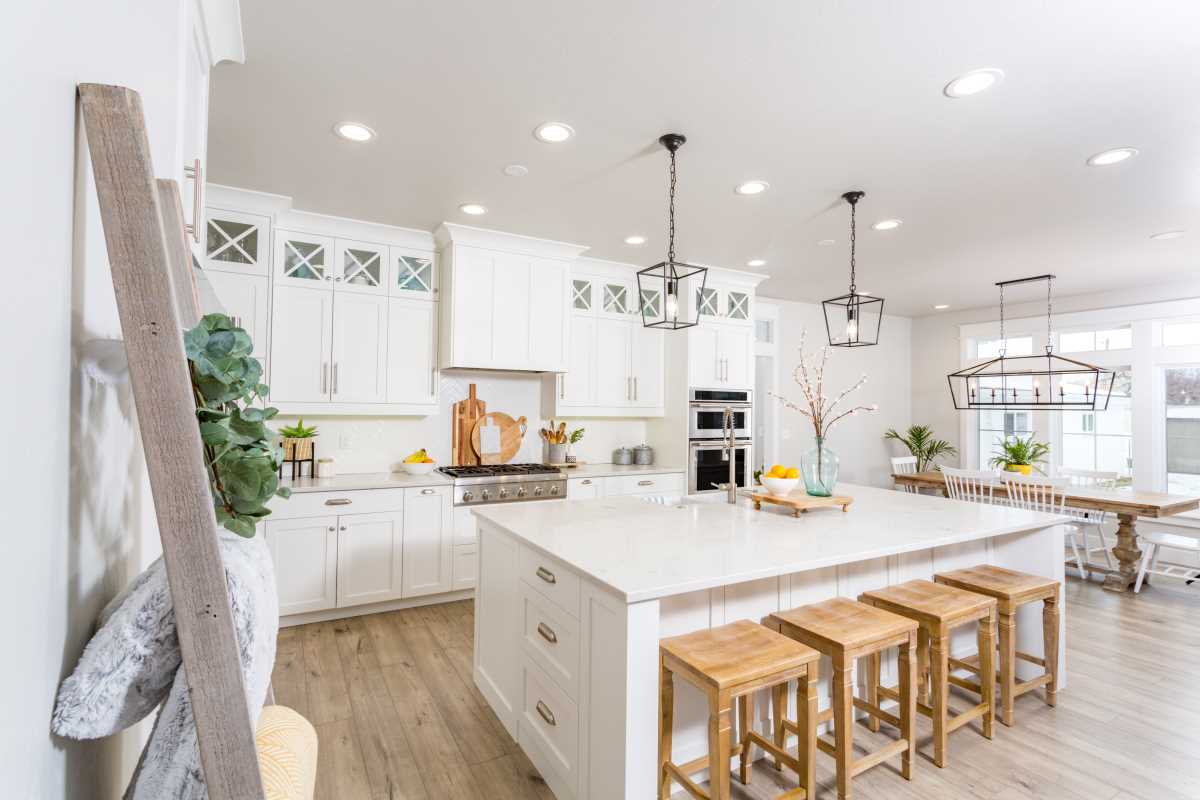Creating a serene and inviting yard is one of the most rewarding home improvement projects. Landscaping not only enhances the aesthetic appeal of your property but also provides a personal sanctuary where you can unwind, entertain, and connect with nature. Whether you have a sprawling garden or a cozy patio, transforming your outdoor space into a relaxing retreat involves careful planning, creativity, and an understanding of landscaping principles.
Assessing Your Space
Before diving into landscaping, it's crucial to assess your existing outdoor space. Start by observing the layout of your yard, taking note of its size, shape, and any existing features. Consider the following aspects:
- Sunlight Exposure: Identify areas that receive full sun, partial shade, or full shade throughout the day. This information will guide your plant selection.
- Soil Quality: Test your soil to determine its pH, texture, and nutrient levels. Amending the soil may be necessary to create a healthy environment for plants.
- Drainage: Look for any areas that may hold water after rainfall, as poor drainage can impact plant health and overall aesthetics.
- Microclimates: Observe variations in temperature and moisture levels in different parts of your yard. Some areas may be warmer or cooler due to structures, trees, or other features.
By understanding these elements, you can make informed decisions about your landscaping project and ensure your design complements the natural characteristics of your yard.
Defining Your Goals
Once you have a solid understanding of your space, it’s time to define your goals. Consider what you want from your yard. Here are some common objectives:
- Relaxation Space: Do you envision a tranquil spot to read, meditate, or enjoy nature?
- Entertainment Area: Would you like a place to host gatherings, barbecues, or family events?
- Gardening: Are you interested in growing flowers, vegetables, or herbs?
- Wildlife Habitat: Do you want to attract birds, butterflies, or other wildlife to your yard?
Clearly outlining your goals will help you create a cohesive design that meets your needs. Think about how you plan to use the space and what elements are essential for achieving that vision.
Choosing a Design Style
Your yard's design style plays a crucial role in determining its overall feel and function. There are several landscaping styles to choose from, each offering unique characteristics:
- Modern: Clean lines, minimalistic design, and a focus on geometric shapes characterize modern landscapes. Use materials like concrete and metal paired with simple plantings.
- Cottage Garden: This style features a charming and informal layout with an abundance of colorful flowers, herbs, and vegetables. It's perfect for those who want a vibrant, cozy feel.
- Japanese Zen Garden: Emphasizing tranquility, Japanese gardens use elements like rocks, gravel, and water to create a peaceful atmosphere. Incorporate carefully placed stones, water features, and minimal plantings.
- Tropical Paradise: If you’re drawn to lush foliage and vibrant colors, a tropical design may suit you. Use a variety of plants, including palms, ferns, and flowering shrubs to create a vibrant environment.
- Desert Oasis: For those in arid climates, a desert landscape can be both beautiful and low-maintenance. Use drought-tolerant plants, rocks, and gravel to create an inviting space.
Choose a style that resonates with you and complements your home. You can also mix elements from different styles to create a unique look that reflects your personality.
Planning Your Layout
Once you've established your goals and design style, it’s time to plan your layout. This step involves deciding how to organize various elements within your yard. Consider these factors:
- Zoning: Divide your yard into zones based on function. Create distinct areas for relaxation, dining, gardening, and play. This organization can enhance the flow and usability of the space.
- Paths and Walkways: Design pathways that lead to different zones. Use materials like stone, gravel, or pavers to create attractive and functional routes throughout your yard.
- Focal Points: Incorporate focal points that draw the eye, such as a beautiful tree, sculpture, or water feature. These elements can serve as conversation starters and enhance the overall design.
- Scale and Proportion: Ensure that the size of plants, furniture, and structures is in harmony with the space. Overly large items can make a small yard feel cramped, while tiny features can get lost in a larger area.
Sketching out your layout on paper or using design software can help visualize how different elements will interact within the space.
Selecting Plants
The right plant selection is crucial for a successful landscape. Choose plants that align with your design goals, climate, and the sunlight and soil conditions of your yard. Here are some tips for selecting plants:
- Native Plants: Consider incorporating native species, as they are adapted to your local climate and soil. They typically require less water and maintenance, making them an eco-friendly choice.
- Diversity: Aim for a mix of plant types, including trees, shrubs, perennials, and annuals. This diversity not only enhances visual interest but also supports local wildlife.
- Seasonal Interest: Choose plants that provide year-round beauty. Incorporate spring bloomers, summer perennials, fall foliage, and evergreens for winter structure.
- Maintenance Needs: Consider how much time you can dedicate to maintenance. Some plants require more care than others, so select varieties that fit your lifestyle.
When planting, pay attention to the spacing and placement of each species. Taller plants should be positioned at the back of beds, while shorter plants can be placed in the front to ensure all are visible.
Creating Outdoor Living Spaces
To enhance your yard's functionality, consider creating outdoor living spaces. These areas can serve various purposes, from dining to relaxation, and can significantly increase your enjoyment of the space. Here are some popular outdoor living features to consider:
- Patios and Decks: A well-constructed patio or deck provides an excellent platform for outdoor dining, lounging, or entertaining. Choose durable materials like wood, composite, or stone to withstand the elements.
- Seating Areas: Incorporate comfortable seating arrangements, such as benches, chairs, or hammocks, where you can relax and enjoy your surroundings. Consider adding cushions and throws for added comfort.
- Fire Pits: A fire pit creates a cozy atmosphere and extends the usability of your outdoor space into the evening. Gather around the fire for warmth and connection, making it a perfect spot for gatherings.
- Pergolas and Gazebos: These structures offer shade and shelter, allowing you to enjoy your outdoor space even during hot or rainy days. They can also serve as a focal point in your landscape design.
When designing these spaces, consider their placement in relation to your home and other landscape elements. Ensure that they create a natural flow and are easily accessible.
Incorporating Water Features
Water features can add a soothing element to your yard, transforming it into a serene retreat. The sound of flowing water can create a calming atmosphere, making it an ideal addition for relaxation. Here are some water feature ideas to consider:
- Fountains: A fountain can serve as a focal point while providing the gentle sound of trickling water. They come in various styles and sizes, from wall-mounted options to larger, freestanding designs.
- Ponds: A pond can create a natural habitat for wildlife while offering a beautiful visual element. Consider adding aquatic plants and fish to enhance the ecosystem.
- Waterfalls: If you have a sloped yard, a waterfall can add visual interest and sound. You can create a cascading waterfall using rocks and boulders, providing a dramatic effect.
- Streams: Incorporating a small stream can mimic natural water flow, adding a sense of tranquility to your landscape. Use stones and gravel to create a winding path for the water.
When adding water features, consider their maintenance requirements. Ensure they are designed for easy cleaning and upkeep to keep them looking their best.
Lighting Your Landscape
Outdoor lighting is essential for creating an inviting atmosphere in your yard, especially during the evening. Thoughtful lighting enhances safety and security while highlighting your landscape's beauty. Here are some lighting options to consider:
- Path Lighting: Use low-voltage lights along walkways to guide guests safely through your space. Solar-powered options are eco-friendly and require minimal installation.
- Spotlights: Install spotlights to highlight focal points, such as trees, sculptures, or water features. This adds drama and visual interest to your landscape.
- String Lights: These festive lights can create a warm and inviting atmosphere, perfect for outdoor gatherings. Drape them over patios, decks, or trees for a whimsical touch.
- Deck and Patio Lighting: Incorporate built-in lighting in your deck or patio to create a cozy ambiance. Recessed lighting or post lights can enhance the functionality of these spaces.
When planning your lighting, consider using timers or smart technology to automate the lighting schedule, ensuring your landscape is beautifully illuminated without constant attention.
Maintaining Your Landscape
A beautifully landscaped yard requires ongoing maintenance to keep it looking its best. Regular care will ensure your plants thrive and your outdoor spaces remain inviting. Here are some essential maintenance tips:
- Watering: Establish a consistent watering schedule based on the needs of your plants. Consider using drip irrigation or soaker hoses for efficient watering.
- Pruning: Regular pruning helps maintain plant health and encourages new growth. Remove dead or diseased branches and shape plants to enhance their appearance.
- Weeding: Keep your garden beds free of weeds to reduce competition for nutrients and water. Hand-pulling weeds or using mulch can help control their growth.
- Fertilizing: Periodically fertilize your plants to provide essential nutrients. Choose organic options whenever possible to promote healthy soil and plant growth.
By committing to regular maintenance, you can ensure your yard remains a beautiful and relaxing haven for years.
 (Image via
(Image via





